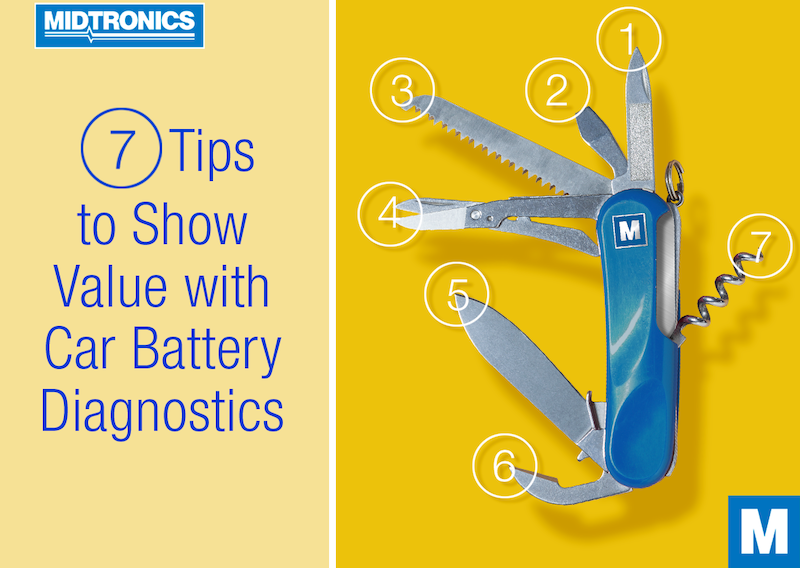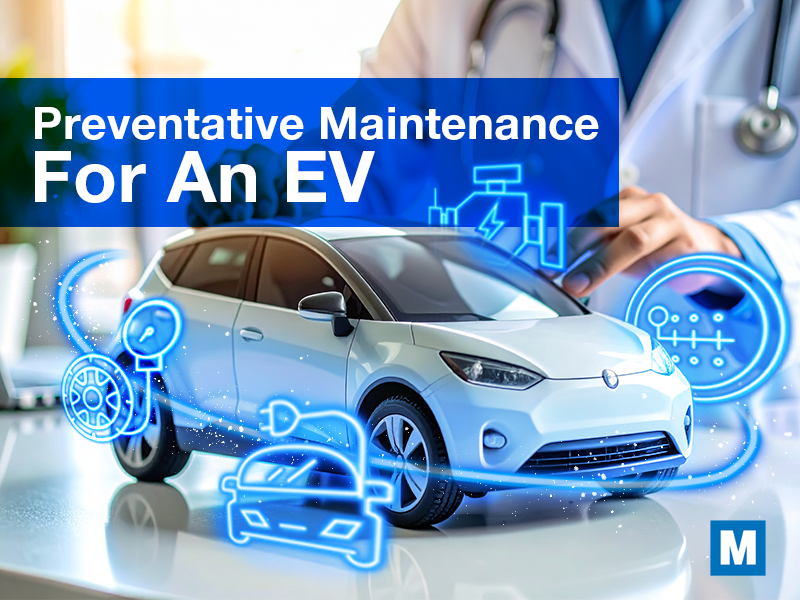For many car repair shops, both in franchised dealerships and independent garages, complimentary battery tests are part of the routine during check-in. Whenever a vehicle pulls into the service drive or shop bay, a battery tester gets pulled out, attached to the terminals, and the battery health is checked on the spot.
For many car owners and even some staff, it can come across more like an exercise to upsell batteries than a customer-centric practice. However, battery tests and more advanced diagnostic processes are an extremely valuable tool in a repair shop’s assets that can not only increase battery sales, but also improve customer satisfaction. Showing that value doesn’t have to be tricky when these seven tips are put into practice regularly.
Perform battery tests with the customer in view
It’s always a great idea to have the vehicle owner or driver participate in a service walkaround. It’s a trust-building exercise that allows them to see any issues that come up on the initial visual inspection, and that includes a complimentary battery test in many situations. Even when it’s a visit for a basic oil and filter change and nothing else, having the customer see what’s being checked allows them to see the level of care their vehicle receives every time it comes into the garage.
Some vehicle owners might not seem to care about the walkaround and battery test, but the consistency that’s shown by testing every battery on every visit is something they’re bound to see less as an annoyance and more as an expectation on each service visit. If it’s consistent, it builds trust.
Explain what a free battery test is looking for
For the 60 to 90 seconds that it takes a battery test to complete in the service drive, you’ll find some customers think you’re wasting their day away. Rather than letting them stew about an extra step during check-in, explain why it’s important that the battery is checked on every visit.
For example, most drivers are aware that a battery tends to last between three and five years with EFB and AGM batteries perhaps a year or two longer. But most don’t consider the possibility of a defective battery off the shelf, an electrical issue contributing to premature failure, or a DIY battery replacement that could fail early because the new one wasn’t registered. It’s an opportunity for a battery issue to be caught before it costs more money than it should.
Give the customer a brief explanation of cranking health, reserve capacity, and charge acceptance while the test is being done. The results will likely be ready before the explanation is complete, the customer will know more about it, and it will reflect on satisfaction surveys.
Discuss the effect on advanced vehicle features
With the advent of new ADAS systems and automatic stop-start technology, a weak battery won’t always mean your vehicle won’t start. It could be an issue where certain features don’t function as they should. For a battery in a vehicle with auto stop-start, the result of a weak or failing battery can include higher fuel consumption due to fewer stop-start cycles.
Service advisors can sprinkle in this type of information while they perform a battery test on a car that is equipped with advanced features. Again, the battery test will likely be complete before the advisor is done talking, and it proves they’re knowledgeable in not just running a battery test but also about why it’s important.
Have a bad battery on display
What does a bad battery look like? Most drivers who’ve replaced a battery themselves may have a preconceived notion that it’ll look like a dusty, grimy case with corrosion on the terminals, likely with the battery date punched out from a few years previous. But that’s not what every failed battery looks like.
A simple display for batteries could be a dirty battery that still tests well next to a new-looking battery that fails. It sends the message that it’s better to be safe than sorry, since you never know which battery is bad.
Send customers newsletters or blogs about battery health
As the saying goes, “knowledge is power”. It’s a great plan to educate your customers with service information including why it’s necessary to test a battery, how batteries can fail, symptoms to watch for, and other commonly searched topics.
Since virtually all dealerships and repair shops have an online presence and blog as well as customer contact lists that include email addresses, it’s simple to post relevant battery diagnostic information and deliver it conveniently. Videos that show how it’s done and the different decisions that can result are also fantastic.
Mention the effects on safety and convenience
Like any repair or service that a customer requires on their vehicle, it’s a good strategy to answer the question in the customer’s mind: “Why does it matter to me?” The most relevant answer is about safety, and close behind is convenience.
Customers might not consider that a dead battery in the throes of winter can put them in an unsafe situation. If you can’t get a boost or a tow truck in a timely fashion, there can be serious implications. And even when a battery causes a no-start condition on the driveway, wasted time is an aggravation since it could mean missed appointments or a missed shift at work.
Introduce the importance of a battery test, a top-up charge, or battery conditioning, relating to their situation so they make the connection with safety and convenience.
Talk about the cost savings compared to unnecessary replacement
Someone might come in requesting a new battery, but it’s not always necessary. Low voltage or slow cranking could be caused by the battery, but conductance profiling might reveal that it’s not bad battery health that’s the root of the issue.
There may be more to investigate than if the battery is good or bad, and it could save the customer hundreds of dollars by undergoing a thorough battery diagnostic rather than jumping to a replacement. And in the long run, the value goes both ways – the customer saves money and the shop earns their trust.
For service shops of all types, it’s easy to let vehicles slip through without a battery test, but there’s value in sticking to the process and testing each one. You’ll help solidify loyal customers and it’s all but guaranteed you’ll sell more batteries in the process.




